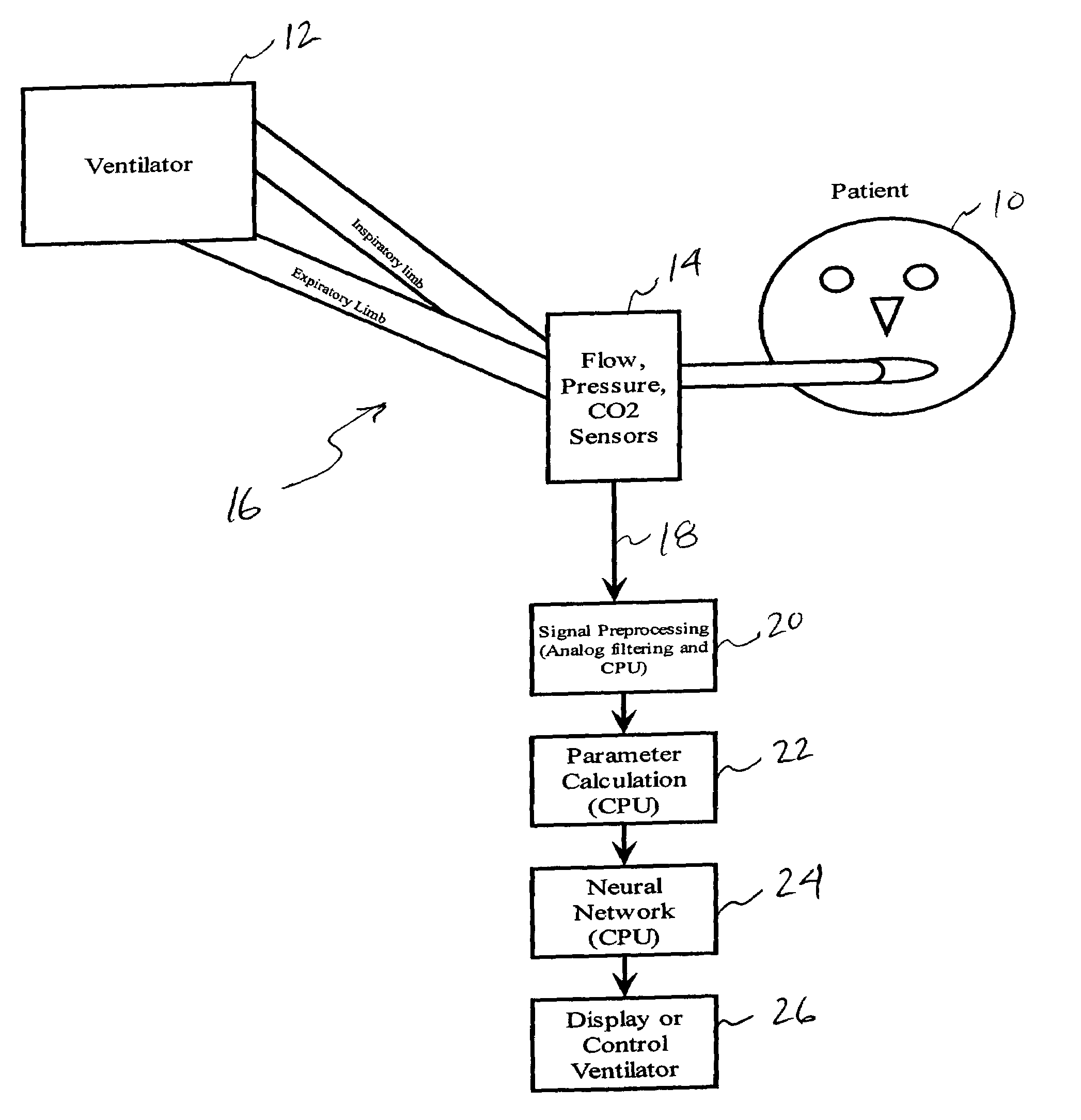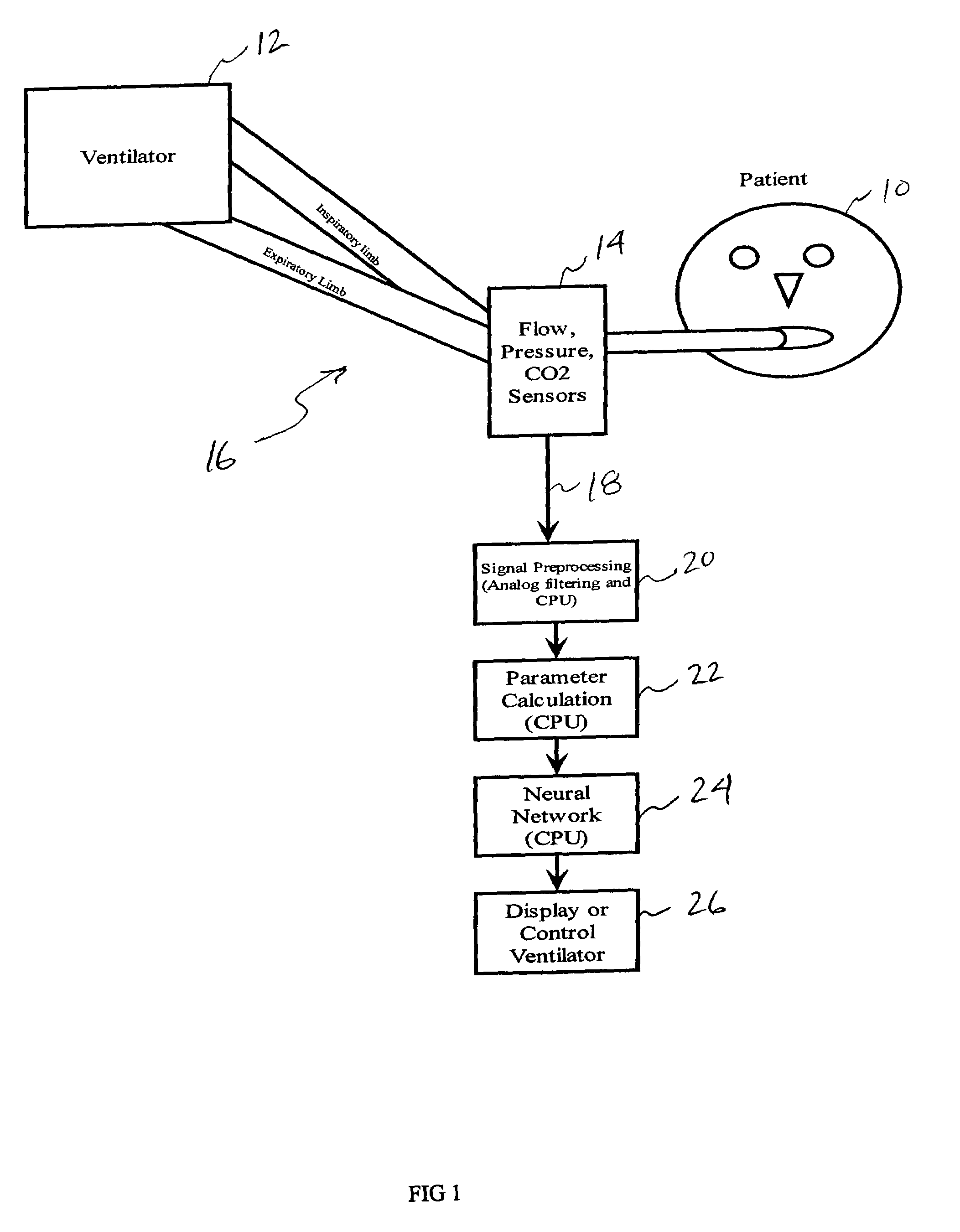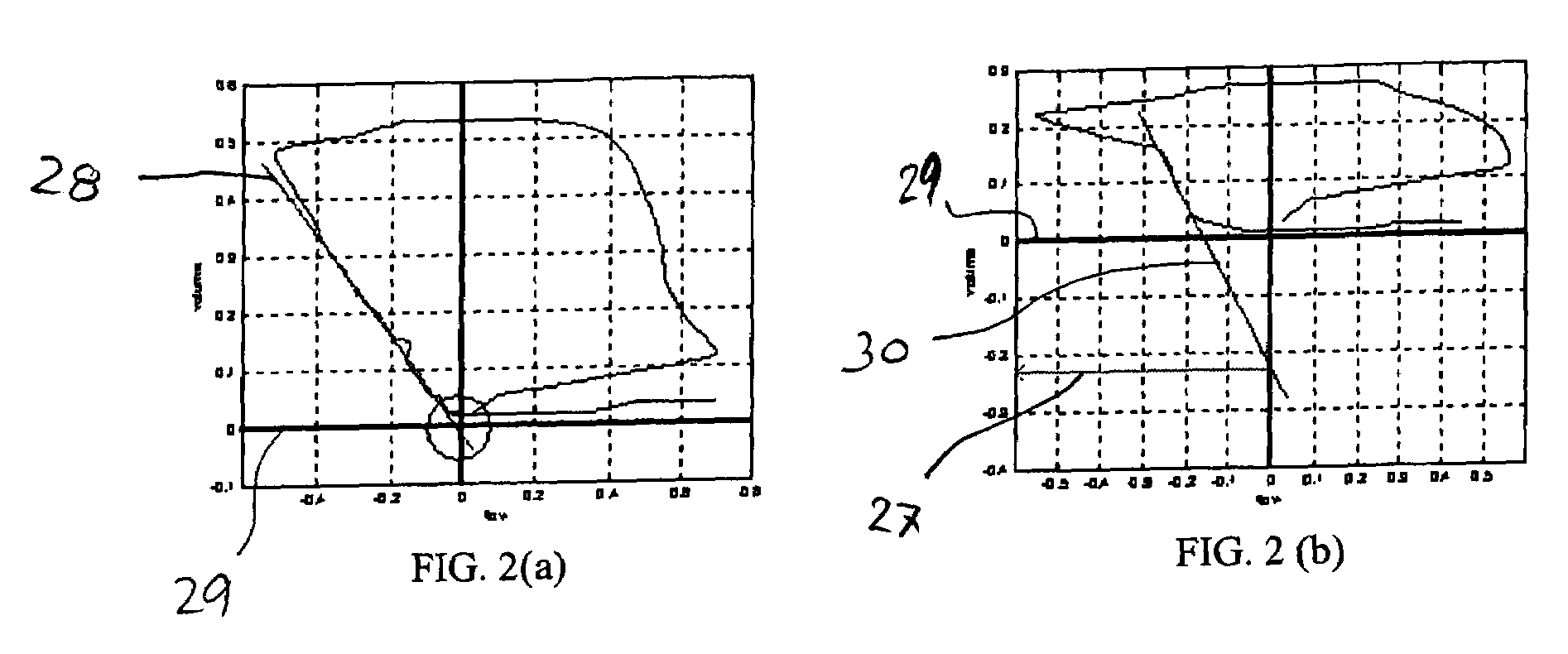Method and apparatus for non-invasive prediction of intrinsic positive end-expiratory pressure (PEEPi) in patients receiving ventilator support
a technology of intrinsic positive end-expiratory pressure and non-invasive prediction, which is applied in the field of respiratory therapy, physiology, critical care medicine, can solve the problems of reducing the pressure-generating capacity of inspiratory muscles, affecting the patient's respiratory therapy, so as to improve patient respiratory therapy management, accurate detection and quantification of peepinon-invasively, and improve patient status
- Summary
- Abstract
- Description
- Claims
- Application Information
AI Technical Summary
Benefits of technology
Problems solved by technology
Method used
Image
Examples
Embodiment Construction
[0055]Referring now to the drawings, the preferred embodiment of the present invention will be described.
[0056]In the embodiment depicted in FIG. 1, a patient 10 requiring respiratory support and connected to a ventilator 12 will have an airway flow and pressure sensor 14, along with possibly a carbon dioxide detector attached at the y-piece of the standard ventilator circuit 16. These sensors measure the flow, pressure, and partial pressure of carbon dioxide in the gases that pass to and from the patient. These raw signals 18 may be preprocessed in a signal processor 20 using analog and digital signal processing to clean the signal, remove sensor biases and offsets, etc. These signals are then be processed in a parameter extraction module 22 to calculate a variety of other parameters from the flow, pressure, and CO2 data and identify indicators, or markers indicative of PEEPi. In an aspect of the invention, a neural network 24 may be provided to model the parameters so that a venti...
PUM
 Login to View More
Login to View More Abstract
Description
Claims
Application Information
 Login to View More
Login to View More - R&D
- Intellectual Property
- Life Sciences
- Materials
- Tech Scout
- Unparalleled Data Quality
- Higher Quality Content
- 60% Fewer Hallucinations
Browse by: Latest US Patents, China's latest patents, Technical Efficacy Thesaurus, Application Domain, Technology Topic, Popular Technical Reports.
© 2025 PatSnap. All rights reserved.Legal|Privacy policy|Modern Slavery Act Transparency Statement|Sitemap|About US| Contact US: help@patsnap.com



